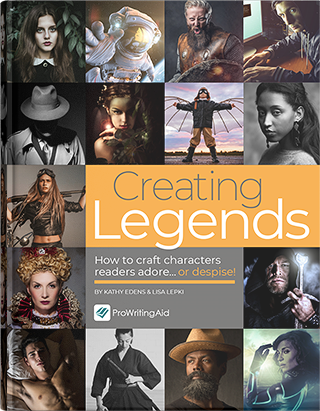
“Nothing moves forward in a story except through conflict.”
This is what Robert McKee, the author of Story: Substance, Structure, Style, and the Principles of Screenwriting, calls the Law of Conflict, and storytelling is governed by it.
The finer details like story setting, character, and plot events all give the reader context and understanding, but conflict, according to McKee, is the “soul” of story. Every kind of story, every genre – novel, short story, science fiction, romance, mystery, historical, young adult, etc. – requires it.
In her book Writing Fiction, Janet Burroway says that, in literature, “only trouble is interesting.” It’s a bit ironic that in real life, we resist trouble; we shy away from conflict. Yet readers crave it in fiction.
First-time authors often find the idea of putting their characters into conflict an upsetting one. Just as they want to avoid conflict in their own lives, they don’t want to place their characters into uncomfortable, confrontational situations. They’ll focus on eloquent setting description or complex character development but then give the main character no conflict to resolve. Don’t make that mistake.
Why Conflict Is Key
Quite simply, conflict keeps your story interesting. Conflict is opposition – either internal or external (more on that below). Conflict is what comes from the challenges your protagonist must solve or resolve on the way to achieving his/her/their goal. It offers a teasing carrot of uncertainty about whether your protagonist will achieve that goal, keeping your readers engaged and turning pages to discover whether (or not) the conflict is resolved.
And that’s what every author wants, right? To carry the reader all the way to THE END?
Without conflict, your main character is simply experiencing a series of largely uninteresting slice-of-life moments. Without conflict, there is no story.
7 Types of Conflict in Fiction
There are two basic kinds of conflict: external and internal, which have been further categorized and codified in many different ways over time. Here are seven different types to consider.
External Conflicts
External conflict pits the character against some exterior force or world-view and happens outside the character’s body. Five of the seven types of conflicts are of the external kind.
1. Person vs. Person
Also called man vs. man and protagonist vs. antagonist, this is the most common type of external conflict. It is clear and universally understood as a good vs. evil story in which an unambiguous challenger opposes the main character.
The heart of this type of story involves two characters with opposing outlooks, opinions, or goals. The story will become richer when both characters believe themselves to be right or when there is no clear right or wrong between their differences.
- In The Hunger Games, Katniss Everdeen must go up against other contestants in order to survive – her vs. them
- In The Wizard of Oz, Dorothy faces off against the Wicked Witch
- Murder mysteries with the investigator vs. murderer also are person vs. person stories
2. Person vs. Nature
This type of conflict counters a character against some force of nature, such as an animal or the weather.
- A classic example is Ernest Hemingway’s Old Man and the Sea
- In Life of Pi, the protagonist must face a tiger trapped in the boat with him
- The drought is a formidable opposition in John Steinbeck’s Grapes of Wrath, as is the setting in Cormac McCarthy’s The Road (read more about the use of setting here)
3. Person vs. Society
When a novel sets a character against a tradition, an institution, a law, or some other societal construct, it is a Person vs. Society story.
- Atticus Finch opposed his racist community in Harper Lee’s To Kill a Mockingbird
- Wilbur fights for his survival against a society that eats pigs in Charlotte’s Web
- In Margaret Atwood’s The Handmaid’s Tale, the society treats women as property of the state; Atwood makes the story even more interesting by layering in environmental disasters (Person vs. Nature) to intensify the conflict
4. Person vs. Technology
When science moves beyond human control, conflicts of Person vs. Technology develop. Stories in this conflict type include:
- 2001: A Space Odyssey
- Mary Shelley’s Frankenstein
- I, Robot
- Apollo 13
5. Person vs. Supernatural
Vampires, werewolves, aliens, and ghosts – any typically unbelievable, supernatural, or inexplicable phenomena – provide Person vs. Supernatural conflicts. Examples of such stories include:
- The Shining, by Stephen King
- The Haunting of Hill House, by Shirley Jackson
- The War of the Worlds, by H.G. Wells
- The Exorcist
- Jeff Vandermeer’s Southern Reach series
- Almost anything by Edgar Allan Poe
Internal Conflicts
The two remaining types of conflicts are internal – ones that happen inside the character’s mind or heart. When your main character has an inner turmoil that’s causing some emotional pain, it increases the tension of the story.

6. Person vs. Self
A character battling inner demons, one who has an inner moral conflict (think Hamlet), or is simply striving to become a better person is in a Person vs. Self conflict.
- Katniss Everdeen in The Hunger Games (again!) must reconcile her need to survive in the battle arena with her desire not to kill another human being
- Daniel Scott Keyes's short story Flowers for Algernon has a main character struggling with losing his intelligence to a congenital mental disability, with the focus on the character’s feelings about his circumstances: the conflict between his intellect and emotion are central
7. Person vs. Destiny (Fate/Luck/God)
This is an ambiguous conflict type. Sometimes aspects of it get split up and parsed out among the other categories. For example, since accepting fate can be seen as an inner personal struggle, some define it as Person vs. Self instead. Or some might reframe Person vs. God as being person against religion and, therefore, would put it in the external conflict type of Person vs. Society. The categories don’t really matter as long as you understand the concept.
Examples of this conflict type include Star Wars, The Odyssey, and Lord of the Rings.
- Although Star Wars contains plenty of external conflicts, a major part of the storyline is Luke’s destiny to become a Jedi Master
- In The Odyssey, Odysseus encounters all sorts of mystical creatures
- Fate has made Frodo the ring-bearer in Lord of the Rings

How to Create Conflict in Your Novel
When a character has a want or a goal and encounters some obstacle, the result is a conflict. The obstacle must be faced by a character readers care about. Additionally, the obstacle must oppose a want or a goal that’s meaningful to that character. The result? Conflict.
Conflict can vary in degree or intensity, but every conflict must have several key characteristics.
- The conflict must be clear, specific, and relevant to the character; it should not be an abstract or trivial problem – either to the character or to the reader
- It must exist within the character’s realm, not separate or remote from their world
- The conflict must not be overcome too easily
- Finally, the conflict must happen to a character(s) the reader cares about (not necessarily “likes,” but has some compassion for)
In summary, conflict results when a compassion-worthy character who wants something intensely encounters a significant obstacle. Add in relevant action and you’ll have a story.
Layered Conflict Makes Compelling Fiction
Every novel needs a major conflict. More complex stories have multiple conflicts, as noted above for Atwood’s The Handmaid’s Tale, which has both Person vs. Society and Person vs. Nature conflicts. Furthermore, a story that contains external conflict can be made more complex, layered, and interesting by including characters who also have inner conflict (see The Hunger Games in the examples above).
James Scott Bell, in The Art of War for Writers, makes this distinction between inner conflict and inner struggle:
An inner conflict is plot-centric; it is an internal obstacle either triggered by or somehow directly connected to the story – the plot. Whereas inner struggle is something that plays against the character’s strengths; it’s something the character brings to the plot, usually from her past, either long ago or recent past (but before the first page). The plot will put the protagonist in situations where she has to deal with this inner struggle, and she’ll carry that struggle with her throughout the story. If the character is in a series, it will run throughout the book series.

To illustrate, let’s say you want your female main character to be assertive. Two qualities that might battle against assertiveness are shyness and indecision. Then consider what in the protagonist’s background could be a reason for her struggle between assertiveness and yet being shy or indecisive. Maybe someone important in her life told her she’d never amount to anything. Maybe she had a hard-scrabble, poor childhood she desperately wanted to get out of, but as a child she saw too many adults around her fail in every attempt to do so themselves. You get the idea?
Pulitzer Prize-winning author Robert Olen Butler says inner conflict is a defining mark of a literary work. A book might also possess characteristics of a particular genre, but inner conflict can give a novel a sense of being the literary kind.
Whether or not you’re striving for a literary work, if you use two or more of the seven types of conflict identified above, making sure at least one is internal, your writing will be compelling.
How do you feel about using conflict in your writing? Let us know in the comments!


